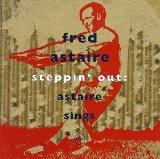Take heel up on toes of front foot, too. Why? Because I've done that for years. Becker, Sampras and Federer can continue to take their toes up on their heel. Can lead to a nice if miniscule replacing of the toes to the right (in the case of Becker and I don't care about the other two right now).
Building on what one has developed is clearly more important at 73. As is a toss which takes hand down to inside of front thigh rather than to inside of back thigh. (Well, I won't generalize for all 73-year-olds.)
How big a difference will this all make? Better serves because closer to what I've always done. But retaining all significant innovations along with their price of course.
Maybe heel can go up no more than half an inch on the rock back. Then slightly reposition toward net by no more than a quarter-inch on the backward-hips-turn-influenced upward lift of the tossing arm. Then go up more during the double knee bend before extension. It's not as cool as Becker's continuous roll onto the ball of his foot but still should work.
To review: Small lift of heel on toes. Even smaller repositioning of heel toward net. Deep knee bend. Double leg thrust combined with large hips turn forward, i.e., a blended spiral.
I also like saving double knee compression for curved descent of the tossed ball. Body and ball breathe together. That is VERY cool.
Building on what one has developed is clearly more important at 73. As is a toss which takes hand down to inside of front thigh rather than to inside of back thigh. (Well, I won't generalize for all 73-year-olds.)
How big a difference will this all make? Better serves because closer to what I've always done. But retaining all significant innovations along with their price of course.
Maybe heel can go up no more than half an inch on the rock back. Then slightly reposition toward net by no more than a quarter-inch on the backward-hips-turn-influenced upward lift of the tossing arm. Then go up more during the double knee bend before extension. It's not as cool as Becker's continuous roll onto the ball of his foot but still should work.
To review: Small lift of heel on toes. Even smaller repositioning of heel toward net. Deep knee bend. Double leg thrust combined with large hips turn forward, i.e., a blended spiral.
I also like saving double knee compression for curved descent of the tossed ball. Body and ball breathe together. That is VERY cool.





Comment